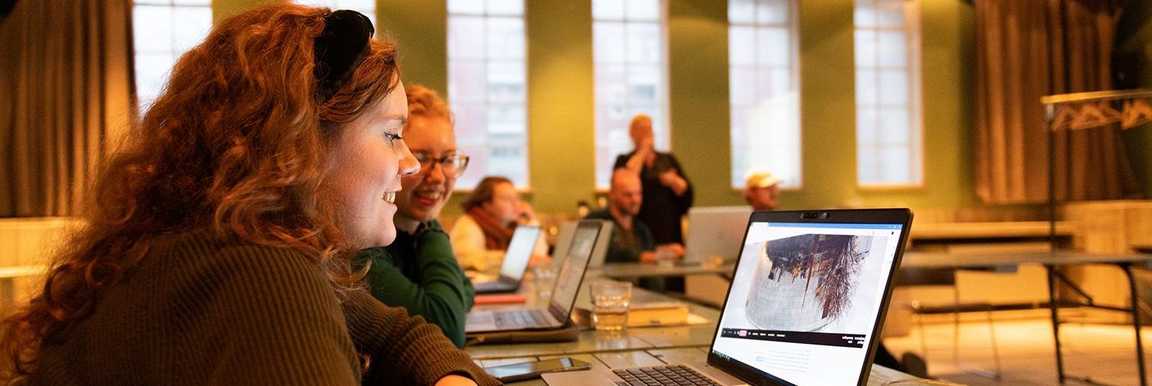
Workshops and Lectures
Workshops and Lectures in the scope of the Collaborative Infrastructure Project, educating about sustainable digital art
Throughout LI-MA’s Collaborative Infrastructure for Sustainable Access to Digital Art project (2021-2024), LI-MA offers workshops and lectures in line with the project’s goals. A summary of these can be found below.
The project initially focuses on caretakers at national collections of contemporary art; in the second instance on national heritage institutions for management and preservation of digital heritage, international digital art collections and artists. In addition, it focuses on those interested in media art worldwide including researchers, curators, university and academy art students, journalists, universities, art lovers, museum audiences. Each casestudy is researched by the LI-MA team, including two junior conservators, collection representatives and interns. The needs and progress is discussed multiple times a year with the participants of the project and the steering group.
Participants are Van Abbemuseum (Eindhoven); De Appel (Amsterdam); Boijmans Van Beuningen ; Rotterdam); Groninger Museum (Groningen); Dutch Cultural Heritage Agency (Amersfoort); Kröller-Müller Museum (Otterlo); Rijksakademie (Amsterdam); Stedelijk Museum (Amsterdam); Bonnefanten Museum (Maastricht); Centraal Museum (Utrecht); Frans Hals Museum (Haarlem); LI-MA (Amsterdam); KRC Collection (Voorschoten); Rabo Art Collection (Utrecht); BPD Art Collection (Amsterdam), The Foundation for the Conservation of Contemporary Art (SBMK) and The Dutch Digital Heritage Network (NDE)
Project Launch
Every year, on the first Thursday of November, the World Digital Preservation Day is celebrated. On this day, archives, museums, libraries and other (heritage) organisations worldwide pay attention to making digital collections sustainably accessible. Sharing each other's work, knowledge and experiences is paramount during this day. The Digital Heritage Network organised a ground-breaking online symposium “The Breaking Down Barriers” on November 4 2021 from LI-MA in Amsterdam.
Gaby Wijers (director LI-MA) opened the world day (in the Netherlands) and interviewed Jan Robert Leegte (artist) about the challenges of digital art and software preservation. The project Collaborative Infrastructure for Sustainable Access to Digital Art was introduced to the Dutch heritage field.
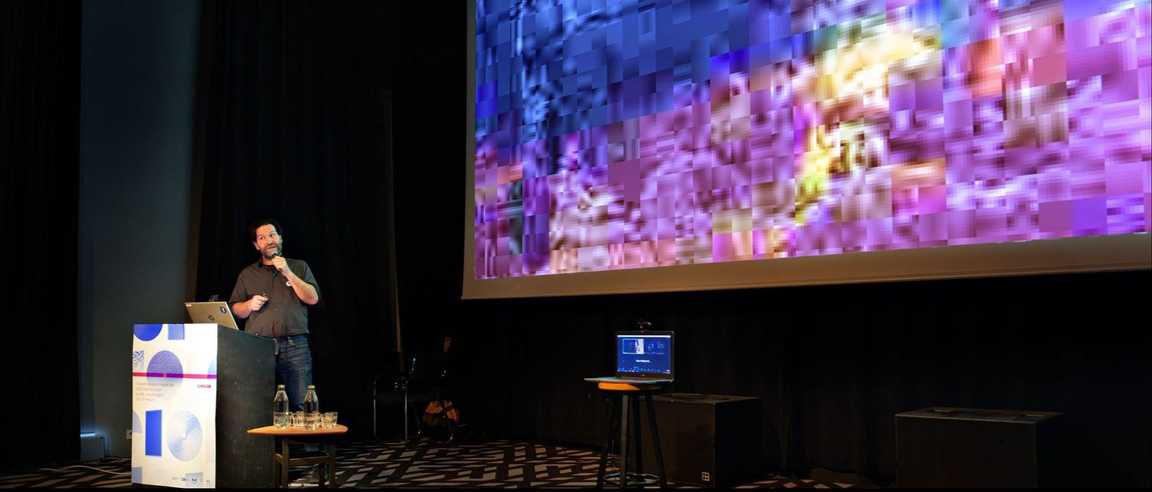
Jan Robert Leegte talking about Compressed Forests at TDA2023. Photo by Pieter Kers.
Sustaining Art
From 9 to 11 November 2022, LI-MA travelled with the rest of the Dutch conservation delegation, including the Foundation for the Conservation of Contemporary Art (SBMK) team, to the Sustaining Art: People, Practice, Planet in Contemporary Art Conservation conference in Dundee, Scotland.
How to Implement Sustainable Practices?
LI-MA and the SBMK teams travelled to Dundee by boat, reflecting the mission of the conference: sustainability. At the conference, LI-MA’s Gaby Wijers (Director), Olivia Brum (Junior Conservator) and Mauricio van der Maesen de Sombreff (Engineer and Junior Conservator, joining online) presented a workshop titled, “Collaborative Care of Digital Art.” Their contribution focused on the importance of building a collaborative sustainable infrastructure for digital art using the conservation measures taken for Jan Robert Leegte’s internet art piece, Compressed Forests, as a key example.
Discussion prompted by the workshop revolved around what happens when social media platforms utilised by artworks no longer work, artist intention regarding how much should be documented, and the importance of institutional collaboration to improve knowledge and practices regarding digital art preservation.
Net Art Analysis Workshop
On 2 December 2022, LI-MA organised a net art analysis workshop for professionals from the 15 institutional partners of the Collaborative Infrastructure for Sustainable Access to Digital Art project.
How to Analyse Net Art?
The workshop was broken down into five sections: one that addressed the history and development of net art, presented by Sanneke Huisman (Curator) and Annet Dekker (Curator, Researcher, University of Amsterdam); one presentation devoted to the case studies covered within the scope of the project, presented by Olivia Brum (Junior Conservator); one instructional section on the technical terminology of net art, presented by Claudia Röck (Conservator); one overview of conservation strategies, presented by Gaby Wijers (Director); and finally one DIY workshop where participants practised using the Internet Art Questionnaire deliverables of the project.
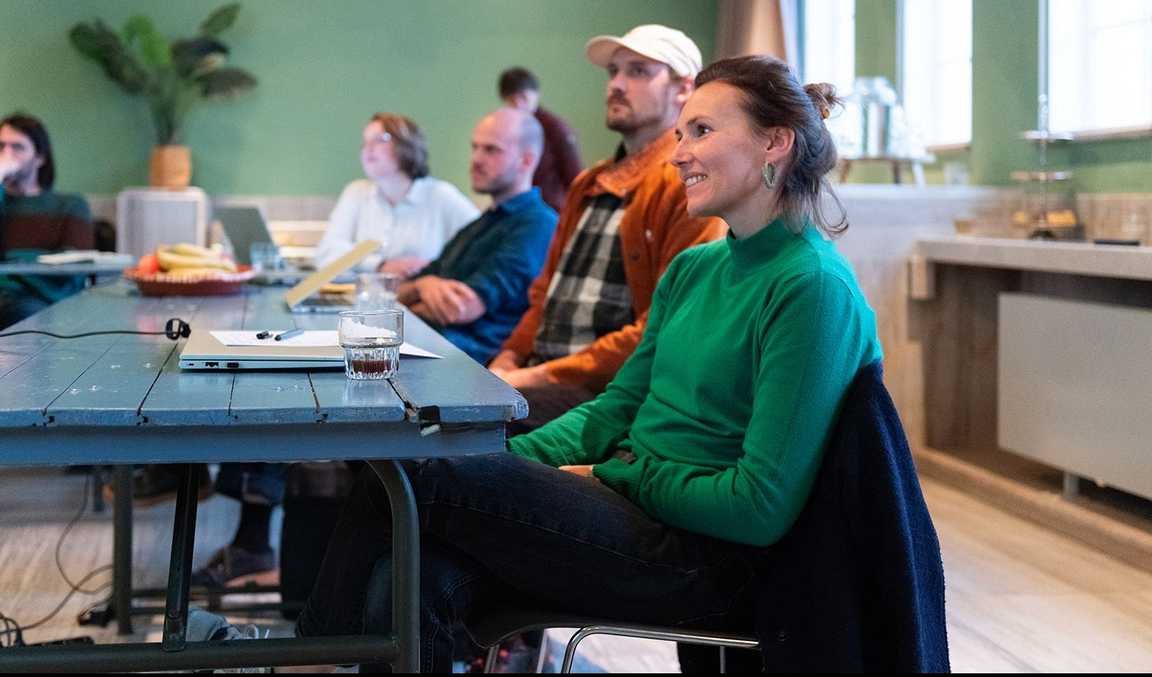
Net Art Analysis workshop. Photo by LNDWstudio
For the DIY component, participants brought their own examples of net art to analyse, including Constant Dullaart’s The Revolving Internet (2010) and Olia Lialina’s Best Effort Network (2013–2020), generating feedback that contributed to the improvement of the Internet Art Questionnaire. This was the first in a series of workshops for the participating institutions, which will also include one on Documentation and another on Storage.
Transformation Digital Art (TDA) Symposium 2023
LI-MAs annual Symposium on the preservation of digital art in March 2023 was dedicated to the challenges and findings of the Collaborative Infrastructure for Sustainable Access to Digital Art Project highlighting Debra Solomon's The Living 1997-1998: a reconstruction, Jan Robert Leegte’s Compressed Forests (2016) and Rafaël Rozendaal’s fillthisup.com (2014). The first work mentioned is an early net art and performance-based work that no longer exists. Haitian Ma (Researcher University of Amsterdam, intern at LI-MA) shared questions and scenarios for the future life of this artwork and its inclusion in the upcoming exhibition REBOOT (7 October 2023 — 12 May 2024), followed by a Q & A with the participants.
We also planned to present and discuss Kahlil Joseph's BLKNWS®' (2018) at TDA 2023, but unfortunately that did not work out. Discussing Its foremost vulnerability, its community-based process of production, is now outlined in a future public program, including the presence of the artist.
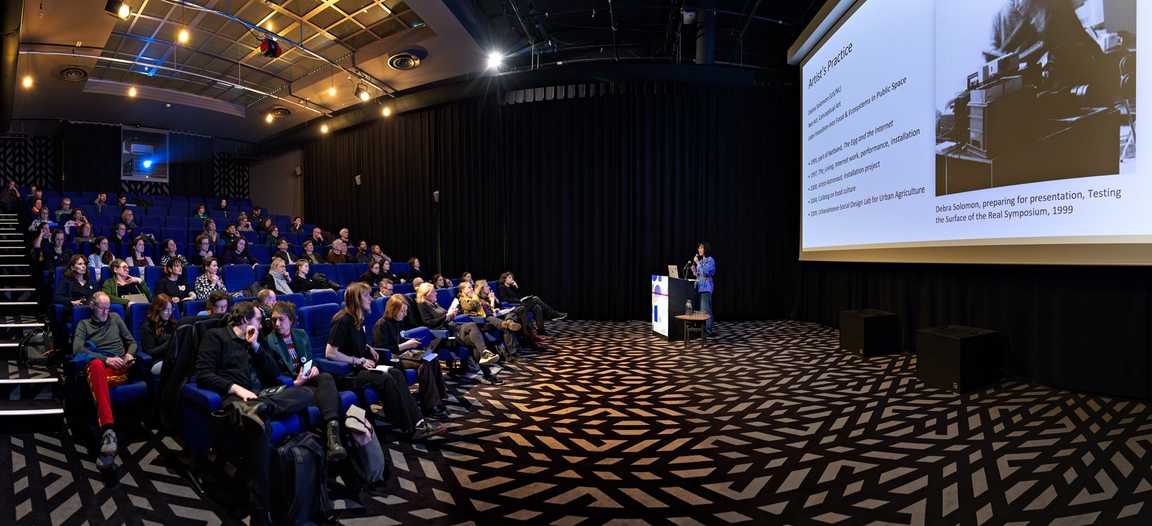
Haitian Ma presenting during TDA2023. Photo by Pieter Kers
LI-MA’s Internet Art Questionnaire in Discussion with the Artist
In the two Net Art Analysing workshop breakout sessions Compressed Forests (2016) and fillthisup.com (2014) were discussed. Joost Dofferhoff (Registrar and Assistant Conservator) moderated the session about Compressed Forests (2016). Jan Robert Leegte gave a short introduction on his work Compressed Forests (2016), after which Joost Dofferhoff continued with the research that had been done on the work in order to preserve it. This research focused primarily on how to analyse and preserve a work that has more than one version as well as external dependencies beyond the creator’s control. During the online Net Art Analysing Workshop, moderated by Olivia Brum (Junior Conservator) and Paula Feranandez (PhD Intern) and held on Rafaël Rozendaal’s fillthisup.com (2014), the artist presented an overview of his net artworks with emphasis on the work included in the case study. Questions presented by the moderators to the artist included the following: How does documenting the work affect the fluidity of the work’s evolution? How do you work with conservators? And who is allowed to update the work so that it stays in line with your artistic intention? Then the participants were presented with the Internet Art Questionnaire and asked to analyse one of the artist’s works. Comments and input provided by the participant’s reflections on working with the questionnaire, such as including a point regarding firewalls, were worked into the finalised form available at the above link.

Joost Dofferhoff presenting during TDA2023. Photo by Pieter Kers
Analysis of Net Art: Shedding Light on the First Three Case Studies in the Project
The first three case studies in the project, Jan Robert Leegte’s Compressed Forest (2016), Rafaël Rozendaal’s fillthisup.com (2014) and Jeroen Jongeleen’s Running A Circle Clockwise (2017), two of which were presented here, were examined from the perspective of analysis. This is in line with the three main themes that guide the Collaborative Infrastructure for Sustainable Access to Digital Art project, which include analysis, documentation and storage. Each theme is assigned to a set of case studies which are then investigated from that perspective, as with the first three included here. The results of this research were investigated in depth with Leegte and Rozendaal as part of the following workshops.
On June 12 2023 Joost Dofferhoff and Gaby Wijers participated in the knowledge day of the National Agency and the Museum Foundation. Their presentation for Dutch museum and heritage professionals focused on the importance of building a collaborative sustainable infrastructure for digital art using the conservation measures taken for Jeroen Jongeleen’s internet art piece, Running a Circle Clockwise as a key example.
In August Paula Fernández Valdés presented her research at the Electronic Media - Virtual Session I as part of the American Institute of Conservation's 51st Annual Meeting. The presentation was well-received, and an article was published in the Electronic Media Review
On the 21th of March 2024 the workshop on presenting and preserving net art was inspired by the project. This session presented and discusses ways to present and preserve net art using emulation – or not. Featuring Dragan Espenschied (preservation director, Rhizome) on using emulation to present Olia Lialina's work, Claudia Roeck (time-based media art conservator, LI-MA, HEK) and Mauricio van der Maesen de Sombreff (digital artist / freelance engineer, LI-MA) on JODI's wwwwwwwww.jodi.org (1995) and Jan Robert Leegte's Scrollbar Composition (2000), and Martina Haidvogl (media conservator, lecturer, HKB) on the participatory web-based artwork Learning To Love You More (LTLYM) (2002-09) by Harrell Fletcher and Miranda July.
Conversation on Conservation
On 21th of March 2024 at Transformation Digital Art (TDA) Symposium Rosa Menkman presented her work A Vernacular of File Formats (2010): an exploration of file format encoding and digital glitches, featuring a self-portrait in various compressed formats, that reveals the aesthetics of data organisation. In conversation with Karen Archey (curator Stedelijk Museum Amsterdam), Rosa Menkman discussed acquisition, preservation and presentation of this case study.
The second theme is Documentation, which encompasses the following case studies: the_living (1997-1998) by Debra Solomon, BLKNWS (2018 - …) by Kahlil Joseph and Clapback Fury (2021) by Saeeda Saeed. These case studies are listed under the general category computer generated art or media art with a live and/or internet community aspect. The works were examined with extra attention towards the creation of tools for encouraging understanding, managing and documenting constantly changing digital artworks.
The final theme, which encompasses the remaining case studies in the project, is Storage. This considers the best ways to sustainably store complex media artworks as A Vernacular of File Formats (2009 - 2010) by Rosa Menkman, digital reconstruction of Het Kubusproject (1969-1971) by Ton Bruynèl (1934-1998) and sculptor Carel Visser (1928 - 2015) and Work No. 371 (2004) by Martin Creed. All works have digital components and are examined with the intention of encouraging understanding of what to store, how and where.
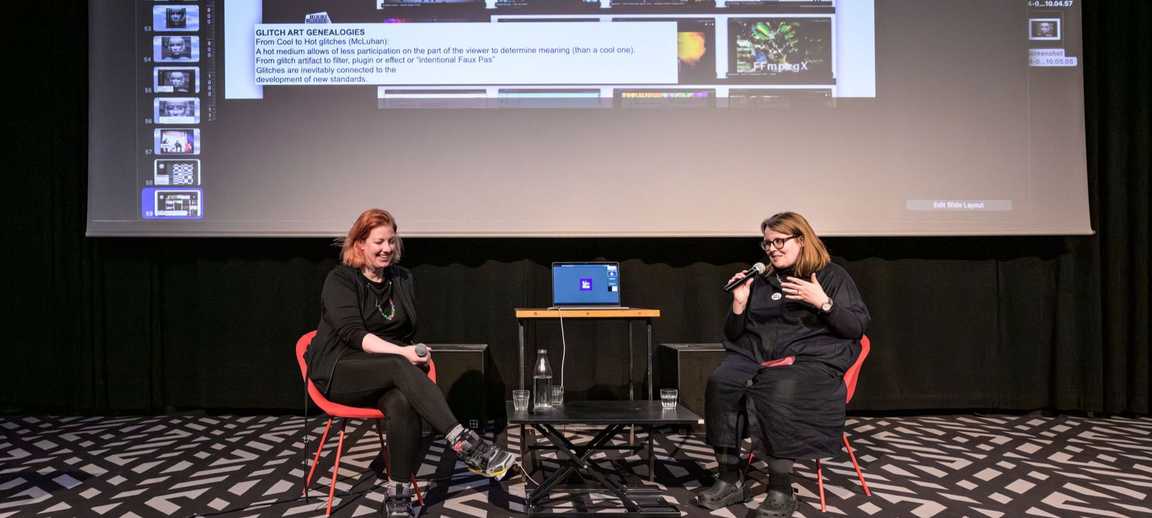
Rosa Menkman and Karen Archey on stage at TDA2024. Photo by Pieter Kers






